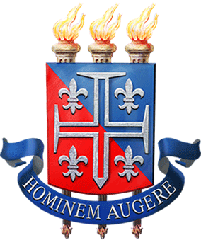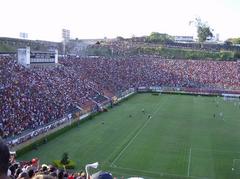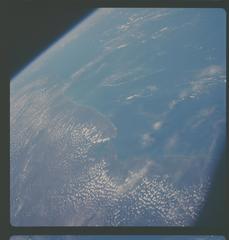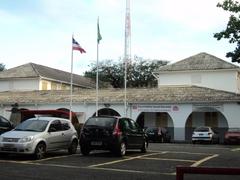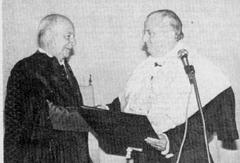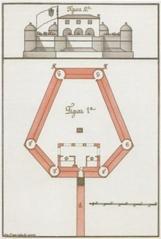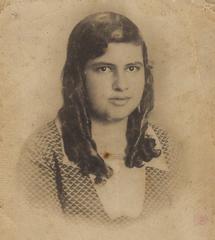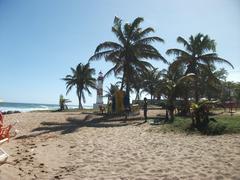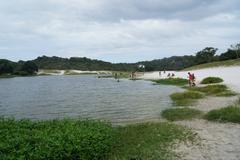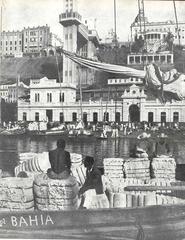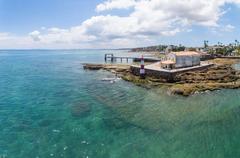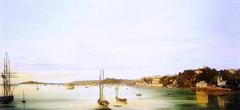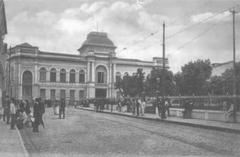Forte de Santo Antônio da Barra Visiting Hours, Tickets, and Salvador Historical Sites Guide
Date: 15/06/2025
Introduction
Forte de Santo Antônio da Barra—popularly known as Barra Lighthouse or Farol da Barra—is a defining symbol of Salvador, Brazil. Perched dramatically at the entrance of the Bay of All Saints, this historic fortification represents nearly five centuries of colonial defense, maritime heritage, and cultural vitality. Built in 1536, it is the oldest fort in Brazil and home to South America’s earliest lighthouse, which continues to guide ships to this day (salvadordabahia.com). Today, the site blends preserved military architecture, sweeping ocean vistas, and dynamic cultural experiences—making it a must-visit for travelers, history enthusiasts, and anyone drawn to the vibrant soul of Salvador.
This guide provides everything you need to plan your visit: history, architecture, visiting hours, ticketing, accessibility, travel tips, and highlights of the surrounding Barra neighborhood.
Table of Contents
- Introduction
- Early Foundations and Colonial Beginnings
- Architectural Evolution and Military Significance
- The Lighthouse: Navigational Beacon and Symbol
- Visitor Information: Visiting Hours, Tickets, and Tips
- The Fort in the Modern Era
- Cultural and Historical Legacy
- Preservation and Public Access
- Frequently Asked Questions (FAQ)
- Conclusion
- References and Useful Links
Early Foundations and Colonial Beginnings
Constructed in 1536, the Forte de Santo Antônio da Barra was the first fortification established in Brazil, even predating Salvador’s official founding. Its strategic location at the mouth of the Bay of All Saints was vital for protecting Portuguese colonial interests against pirates and rival European powers throughout the 16th and 17th centuries. As Salvador blossomed into a bustling colonial capital and Atlantic trading hub, the fort’s role as guardian of the bay became increasingly prominent (salvadordabahia.com).
Architectural Evolution and Military Significance
The fort’s architecture is a classic example of Renaissance military engineering: a star-shaped bastion with thick stone walls and robust ramparts. Over the centuries, it underwent several expansions and upgrades, especially during threats such as the Dutch invasions in the 17th century. The design enabled effective defense against both maritime and land-based assaults, with sweeping views of the Atlantic providing both deterrence and beauty (salvadordabahia.com).
The Lighthouse: Navigational Beacon and Symbol
In 1839, the Farol da Barra lighthouse was inaugurated atop the fort, replacing earlier beacons. At 22 meters tall, it remains the oldest functioning lighthouse in the Americas. Its white and red beams, visible up to 70 kilometers away, have long guided vessels safely through the treacherous bay entrance. The lighthouse stands today as both a practical navigational aid and a potent symbol of Salvador’s openness and resilience (bahia.ws; Lonely Planet).
Visitor Information: Visiting Hours, Tickets, and Tips
Visiting Hours
- Standard: Tuesday to Sunday, 9:00 AM – 6:00 PM
- January and July: Open daily
- Note: Hours may vary on holidays and for special events. Confirm on the official museum website before your visit.
Tickets
- General Admission: R$15–R$20 for adults
- Discounts: Available for students, teachers, seniors, and local residents (with proof of eligibility)
- Lighthouse Climb: Additional small fee may apply
- Purchase: On-site or online during peak seasons (Museu Náutico da Bahia)
Accessibility
- Partial Accessibility: Main fort and museum areas are wheelchair-accessible. Some upper levels and the lighthouse require stairs, which may not be suitable for all visitors.
- Facilities: Accessible restrooms; staff available for assistance.
Guided Tours and Events
- Guided Tours: Offered in Portuguese (sometimes English); book at ticket office or in advance for deeper insights.
- Events: The fort hosts cultural events, art exhibitions, and performances—especially during Carnival and holidays.
Travel Tips
- Best Times: Early morning or late afternoon; sunset hours are especially popular
- Weather: Dry season (September–March) offers the most pleasant conditions; rain is more common April–July
- Safety: Barra is safe and tourist-friendly, but standard precautions apply
- Photography: Allowed throughout; be mindful of flash restrictions in some museum areas
The Fort in the Modern Era
No longer needed for military defense, Forte de Santo Antônio da Barra now houses the Nautical Museum of Bahia, which exhibits an extensive collection of maritime artifacts, ship models, navigation tools, and relics from shipwrecks spanning over 300 years. The museum’s displays, available in Portuguese and English, are engaging for all ages and shed light on Bahia’s seafaring history (Museu Náutico da Bahia; Lonely Planet).
Cultural and Historical Legacy
Beyond its military past, the fort is a symbol of Salvador’s multifaceted identity. Its black-and-white striped lighthouse features prominently in local iconography—on stamps, postcards, and artworks (Wikipedia PT). During Salvador’s world-famous Carnival, the fort becomes a lively backdrop for parades and celebrations, blending historical grandeur with vibrant cultural life. Its history as a site of defense, trade, and the transatlantic slave route invites reflection on both Brazil’s challenges and its enduring spirit (Bahia.ws).
Preservation and Public Access
Managed by the Brazilian Navy and local authorities, the fort is actively preserved to maintain its historical integrity while welcoming thousands of visitors each year. Interpretive panels and educational programs foster awareness about the importance of heritage conservation (Brazilian Navy Cultural Heritage).
Frequently Asked Questions (FAQ)
Q: What are the Barra Lighthouse visiting hours?
A: Tuesday to Sunday, 9:00 AM–6:00 PM (daily in January and July).
Q: How much is admission?
A: R$15–R$20 for adults; discounts for eligible groups.
Q: Is the site wheelchair accessible?
A: Most areas are accessible, but the lighthouse and some upper levels require stairs.
Q: Are guided tours available?
A: Yes, inquire at the ticket office or book in advance.
Q: Can I take photos?
A: Photography is allowed throughout the fort and museum.
Conclusion
A visit to Forte de Santo Antônio da Barra offers more than stunning ocean views—it’s a journey through the heart of Salvador’s history, culture, and collective memory. Its blend of architectural grandeur, museum collections, and vibrant community life makes it one of Brazil’s most rewarding historical sites. For the best experience, check current visiting hours, secure your tickets, and plan to explore the surrounding Barra neighborhood, renowned for its beaches, food, and music. Download the Audiala app for up-to-date guides, audio tours, and insider tips to enrich your Salvador adventure.
References and Useful Links Including Official Sites and Further Reading
- Barra Lighthouse official museum page
- Bahia.ws: History of Forte de Santo Antônio da Barra
- Wikipedia: Forte de Santo Antônio da Barra
- Lonely Planet: Forte de Santo Antônio da Barra
- Atlas Obscura: Forte de Santo Antônio da Barra
- Museu Náutico da Bahia
- Brazilian Navy Cultural Heritage
Visuals and Tips:
- High-quality images of the fort, lighthouse, and museum are recommended.
- Embed a map of the fort’s location for visitor orientation.
- Include internal links to related guides on Salvador historical sites and events.

